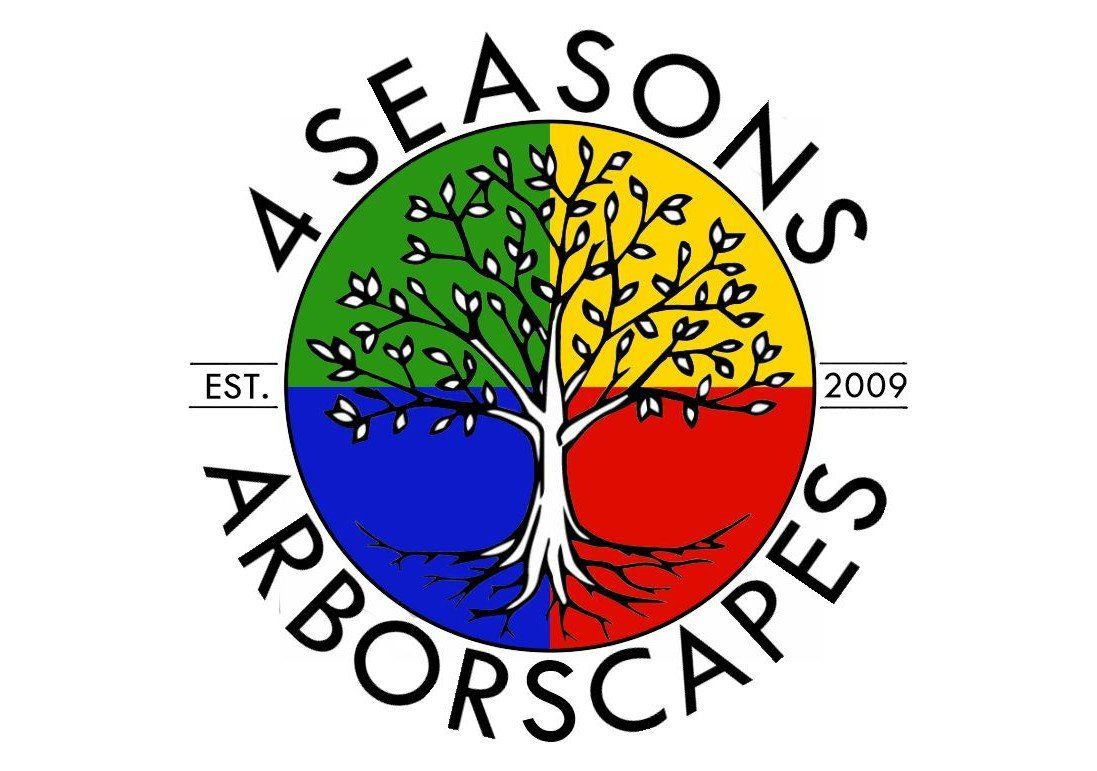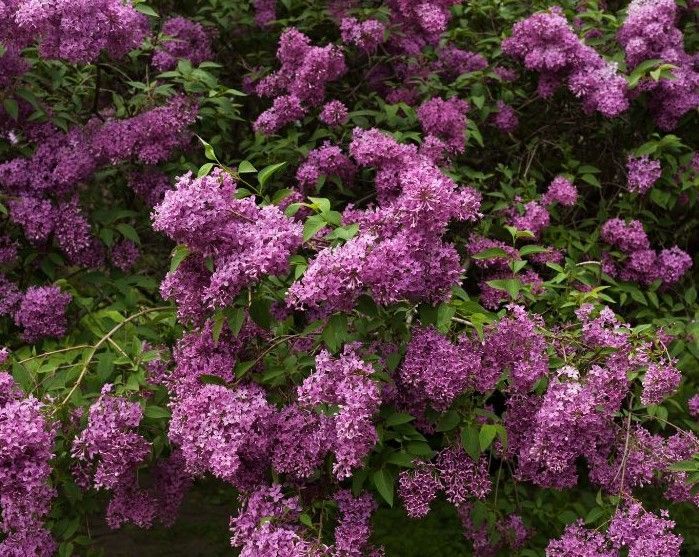Natural Insect Repellants for You and Your Yard
There is nothing more frustrating than dealing with bug bites and flies buzzing around your face while you're trying to relax in your yard. And commercial bug sprays are often filled with harsh chemicals and may not effectively keep pests at bay. In this series we'll talk about a variety of eco-friendly solutions that help keep bugs at bay without resorting to harsh chemicals. From the use of essential oils and homemade sprays, to plants that bugs will run (fly?) in terror from, we explore effective, safe, and sustainable ways to protect your yard and loved ones from unwanted pests.
1. Neem Oil
Derived from the neem tree, neem oil is renowned for its insecticidal properties. Neem oil repels a wide range of insects, including mosquitoes, ants, aphids, beetles, caterpillars, and more. Its broad-spectrum repellent properties make it versatile for use in various settings, from gardens to homes.
This natural product contains azadirachtin, a compound that disrupts the growth and development of insects. Azadirachtin acts as a natural insect growth regulator, preventing pests from reaching maturity and reproducing, making neem oil an effective solution for pest control. By making plants less palatable, it acts as a deterrent and interferes with pests' ability to lay eggs or mate effectively.
One of the significant advantages of neem oil is that it is non-toxic to humans and pets when used correctly. Being a natural product derived from the neem tree, it offers an eco-friendly alternative to chemical insecticides. Furthermore, neem oil is biodegradable and breaks down quickly in the environment, reducing its impact on ecosystems. It poses minimal risk to non-target organisms, such as beneficial insects and wildlife.
How to Use:
To use neem oil as a bug repellent on plants and outdoor areas, simply dilute it with water according to the manufacturer's instructions and apply it to affected areas using a spray bottle or garden sprayer. Reapplication may be necessary, especially after rain or watering, to maintain its effectiveness against pests.
While neem oil is generally safe for use on plants and around homes, its use on skin requires caution. Neem oil can be applied topically for certain skin conditions, but it should always be diluted and used in small amounts.
- Always dilute neem oil with a carrier oil, such as coconut oil, olive oil, or jojoba oil. A typical dilution ratio is 1 part neem oil to 10 parts carrier oil.
- Before applying neem oil to a larger area of your skin, conduct a patch test. Apply a small amount of the diluted oil to a small patch of skin, like the inside of your elbow, and wait 24 hours to see if any irritation or allergic reaction occurs.
- If no adverse reaction occurs, you can apply the diluted neem oil to your skin. Avoid sensitive areas such as the eyes, mouth, and any broken or irritated skin.
Precautions:
- Neem oil has a strong smell that some people might find unpleasant.
- It can cause irritation or allergic reactions in some individuals, so it’s essential to test and use it cautiously.
- Consult a healthcare professional before using neem oil if you are pregnant, breastfeeding, or have underlying health conditions.
2. Citronella
Citronella oil is a well-known natural insect repellent commonly used in candles, sprays, and lotions.
It is particularly effective against mosquitoes and other biting insects such as flies and gnats. Its effectiveness stems from compounds like citronellal and geraniol, which interfere with insects' ability to locate and feed on humans and animals, effectively deterring them. This makes citronella a popular choice for outdoor activities where mosquito control is needed.
In terms of safety, citronella is generally considered safe for use around humans and pets when used as directed. Derived from certain species of lemongrass, it is non-toxic and preferred by those seeking natural alternatives to chemical insect repellents. Additionally, citronella is environmentally friendly. It is a renewable resource that is biodegradable and poses minimal risk to the environment. Unlike synthetic insecticides, which can persist in the environment and harm non-target organisms, citronella breaks down quickly without leaving harmful residues.
Citronella is versatile in its applications. It can be used in various forms, including candles, sprays, lotions, and essential oils. These products can be applied to the skin or dispersed in the air to create a barrier against insects both indoors and outdoors.
How to Use:
To use citronella as a bug repellent, you can burn citronella candles or torches in outdoor areas to create a mosquito-free zone. You can also apply citronella-based insect repellent sprays or lotions to exposed skin before going outdoors. Additionally, using citronella essential oil in diffusers or as a natural ingredient in homemade insect repellent formulations can be effective. Planting citronella grass (Cymbopogon nardus) in gardens or outdoor living spaces can also naturally repel mosquitoes.
- Citronella oil should be diluted before applying to the skin. Pure essential oil can be too strong and may cause irritation. A typical dilution ratio is 1-2 drops of citronella oil per tablespoon of carrier oil (such as coconut oil, jojoba oil, or almond oil).
- Before applying citronella oil more broadly, perform a patch test. Apply a small amount of the diluted oil to a small patch of skin and wait 24 hours to ensure there is no allergic reaction or irritation.
- Do not apply citronella oil to sensitive areas such as the eyes, mucous membranes, or broken skin.
Precautions:
- Citronella oil has a strong smell that some people might find unpleasant.
- It can cause irritation or allergic reactions in some individuals, so it’s essential to test and use it cautiously.
- Consult a healthcare professional before using citronella oil if you are pregnant, breastfeeding, or have underlying health conditions.
3. Garlic
Garlic contains compounds that are offensive to many insects, making it an effective natural repellent. Crushed garlic cloves or garlic oil can be used to deter pests in gardens or outdoor areas.
Garlic is effective against a wide range of insects, including mosquitoes, aphids, cabbage worms, and spider mites. One of the key components in garlic is allicin, a compound known for its insect-repelling properties. When garlic is crushed or chopped, it releases this chemical. Its repellent properties make it a versatile option for controlling pests in gardens, yards, and outdoor living spaces.
Additionally, garlic is safe for use around humans and pets when used appropriately. Unlike synthetic pesticides, which may contain harmful chemicals, garlic-based repellents pose minimal risk to non-target organisms and the environment. Garlic-based repellents are also biodegradable, breaking down quickly in the environment and reducing their impact on ecosystems. It does not leave harmful residues in the soil or water, making it an eco-friendly option for pest control.
How to Use:
Utilizing garlic-based repellents is a simple solution for deterring insects. By crushing garlic cloves and infusing them in water, a DIY spray can be made to protect plants, foliage, and soil. Another option is to mix garlic oil or extract with water to create a repellent spray. Here's how:
- Crush a few garlic cloves and mix them with a carrier oil (such as coconut oil or olive oil). Let the mixture sit for a few hours to infuse, then strain out the garlic pieces.
- Apply a small amount of the diluted garlic oil to your skin, focusing on areas where you typically get bitten by insects.
- Store the garlic oil mixture in a cool, dark place and use it within a week to maintain its potency.
Precautions:
- Do not apply garlic near sensitive areas such as the eyes, nose, mouth, or any broken or irritated skin. Garlic can cause a burning sensation and irritation in these areas.
- Avoid using garlic in areas where animals may be able to consume it. Garlic is toxic to dogs when ingested.
- If you have sensitive skin, allergies, or any skin conditions, consult a healthcare professional before using garlic on your skin. Use garlic repellent only for short periods and wash it off your skin after a few hours to minimize the risk of irritation.
4. Marigolds
Planting marigolds around your garden or outdoor living spaces can help keep pests at bay. Marigolds contain pyrethrins, natural insecticides that affect the nervous system of insects, leading to paralysis and death. These compounds are particularly effective against mosquitoes, aphids, whiteflies, and other common garden pests.
In addition to their insecticidal properties, marigolds emit a strong odor that is unpleasant to many insects, acting as a natural deterrent. This scent masks the smell of nearby plants and discourages pests from feeding or laying eggs on them. Marigolds are also excellent for companion planting. Planting marigolds among other crops can help repel pests and protect neighboring plants. They act as a natural barrier, reducing the likelihood of insect infestations and minimizing the need for chemical pesticides.
Marigolds not only repel harmful insects but also attract beneficial insects such as ladybugs and hoverflies, which prey on aphids and other garden pests. This creates a balanced ecosystem and promotes natural pest control. Moreover, marigolds are easy to grow and maintain, making them a popular choice for home gardeners. They thrive in a wide range of soil conditions and require minimal care, making them an accessible option for those seeking natural pest control solutions.
How to Use:
To use marigolds as a bug repellent, plant them in gardens, flower beds, or pots around your home to deter pests and protect other plants. You can also dry marigold flowers and crush them to make a homemade insect repellent spray. Steep the crushed flowers in water, strain the mixture, and transfer it to a spray bottle. Apply the spray to plants, foliage, and soil to repel insects. You will need:
- 10-15 drops of marigold essential oil or a small amount of marigold extract
- 2 tablespoons of carrier oil (such as coconut or olive oil)
- Optional: a few drops of other essential oils like lavender or citronella for added effectiveness
Here's what to do:
- Mix the marigold essential oil with the carrier oil in a small bottle.
- Shake well to combine.
- Apply a small amount to exposed skin, avoiding the face and eyes.
Additionally, place dried marigold flowers in sachets and hang them in areas where insects are a problem, such as near doorways or windows. Freshly cut marigold flowers placed in vases or bouquets indoors can help repel insects like flies and mosquitoes. The strong scent of marigolds can act as a natural insect deterrent in your home.
Precautions:
- Avoid applying near eyes, mouth, or on broken skin.
- Do a patch test first to check for allergic reactions.
- Avoid direct sunlight on treated areas. Some essential oils can increase skin sensitivity to sunlight (phototoxicity). Though marigold oil is not known to be phototoxic, it's still a good practice to avoid direct sun exposure on areas where the oil has been applied.
- Store the repellent in a cool, dark place to preserve its potency and prevent degradation.
5. Catnip
Catnip contains a compound called nepetalactone, which has been found to repel insects such as mosquitoes, flies, cockroaches, and ants. This natural repellent is effective and environmentally friendly, offering a safe alternative to synthetic insecticides and repellents. Unlike synthetic products, catnip is non-toxic to humans, pets, and beneficial insects like bees and butterflies, providing a safe option for pest control without harming the environment.
While catnip repels pests, it also attracts beneficial insects like bees and butterflies, promoting pollination in the garden and supporting overall ecosystem health. This dual function makes it a valuable plant for any garden. Moreover, catnip can be strategically planted as a form of companion planting to deter pests from nearby plants, protecting vegetables, herbs, and ornamental plants from insect damage.
Catnip has a pleasant fragrance that can help mask the scent of other plants, making them less attractive to pests. The aromatic oils released by catnip can also deter animals like deer and rabbits from feeding on nearby plants. In addition to its pest-repelling properties, catnip can serve as a low-maintenance ground cover in areas where grass struggles to grow, with its dense foliage helping to suppress weeds and erosion.
How to Use:
Versatile in its uses, catnip can be crushed and rubbed on the skin as a natural insect repellent, or infused into oils, sprays, or candles for use in outdoor spaces. This makes it a flexible solution for different needs. Additionally, catnip is easy to grow in most climates and soil conditions, making it a convenient addition to any yard or garden. As a hardy perennial plant, it requires minimal maintenance and can even be grown in containers. Here's some ideas on using catnip as a bug repellant:
- Crushed catnip. Crush fresh catnip leaves or flowers in your hands to release their aromatic oils. Rub the crushed catnip directly onto your skin or clothing as a natural insect repellent. Focus on exposed areas such as arms, legs, and neck.
- Catnip oil. Infuse catnip leaves or flowers in a carrier oil such as olive oil or coconut oil to create a homemade insect repellent oil. Place the catnip and carrier oil in a clean glass jar, cover tightly, and let it sit in a warm, sunny spot for 1-2 weeks. Strain out the plant material and transfer the infused oil to a spray bottle. Apply the catnip oil to your skin or clothing before going outdoors.
- Catnip spray. Steep dried catnip leaves or flowers in boiling water to create a catnip infusion. Let the mixture cool, then strain out the plant material. Transfer the catnip infusion to a spray bottle and use it to mist your skin, clothing, and outdoor seating areas. Reapply the catnip spray as needed for continued bug protection.
- Catnip Candles. Burn catnip-infused candles or citronella candles containing catnip oil to repel insects from outdoor living spaces. Place the candles strategically around patios, decks, and picnic areas to create a bug-free environment.
- Plant catnip. Plant catnip in your garden, flower beds, or pots to naturally deter insects from the area. Consider placing catnip plants near doors and windows to prevent bugs from entering your home. Catnip is particularly effective at repelling mosquitoes, so planting it around outdoor seating areas can help create a mosquito-free zone.
- Catnip sachets. Fill small sachets or pouches with dried catnip leaves or flowers and place them in drawers, closets, or outdoor seating areas to repel insects indoors and outdoors. Refresh the sachets periodically by crushing the catnip to release its scent.
- Catnip pet collars. Choose a fabric collar or bandana that fits your pet's neck comfortably. Opt for a pre-made collar or craft your own using fabric. Crush dried catnip leaves or flowers before use. For fresh catnip, ensure it is entirely dry. Fold the fabric in half to form a pocket for the catnip. Stitch around the edges, leaving one side open. Fill the pocket with dried catnip carefully. Seal the open end securely with glue or stitches. Let the collar sit for a few hours to allow the scent to infuse. Fasten the collar around your pet's neck snugly. Replace or refill the catnip as needed.
Precautions:
- Always supervise your pet when using a catnip collar to ensure they don't chew or ingest the fabric or catnip. If your pet shows signs of irritation or discomfort while wearing the collar, remove it immediately.
- Catnip is generally safe to use on your skin without dilution. However, irritation or allergic reaction could occur in some people. Perform a patch test to ensure you will not have an adverse reaction.
- Catnip is a stimulant for felines. When catnip is present in a household with cats, it can elicit a strong response from them.

Sign up for monthly newsletters!
From easy tree care practices to fun DIY projects, we've got something for everyone.

Interested in what we can do for you?
Call us at 610-648-0404 or book an appointment online.

Sign up for monthly newsletters!
Get our latest articles, delivered right to your inbox. No spam, ever.
Check out the latest...
Sign up for monthly newsletters!
From easy tree care practices to fun DIY projects, we've got something for everyone.






WHAT WE DO
WHO WE ARE
Join the Tree Society newsletter
Get monthly articles on the latest in the tree care industry, curated by people deeply passionate about environmental stewardship.
We use cookies to ensure that we give you the best experience on our website.



